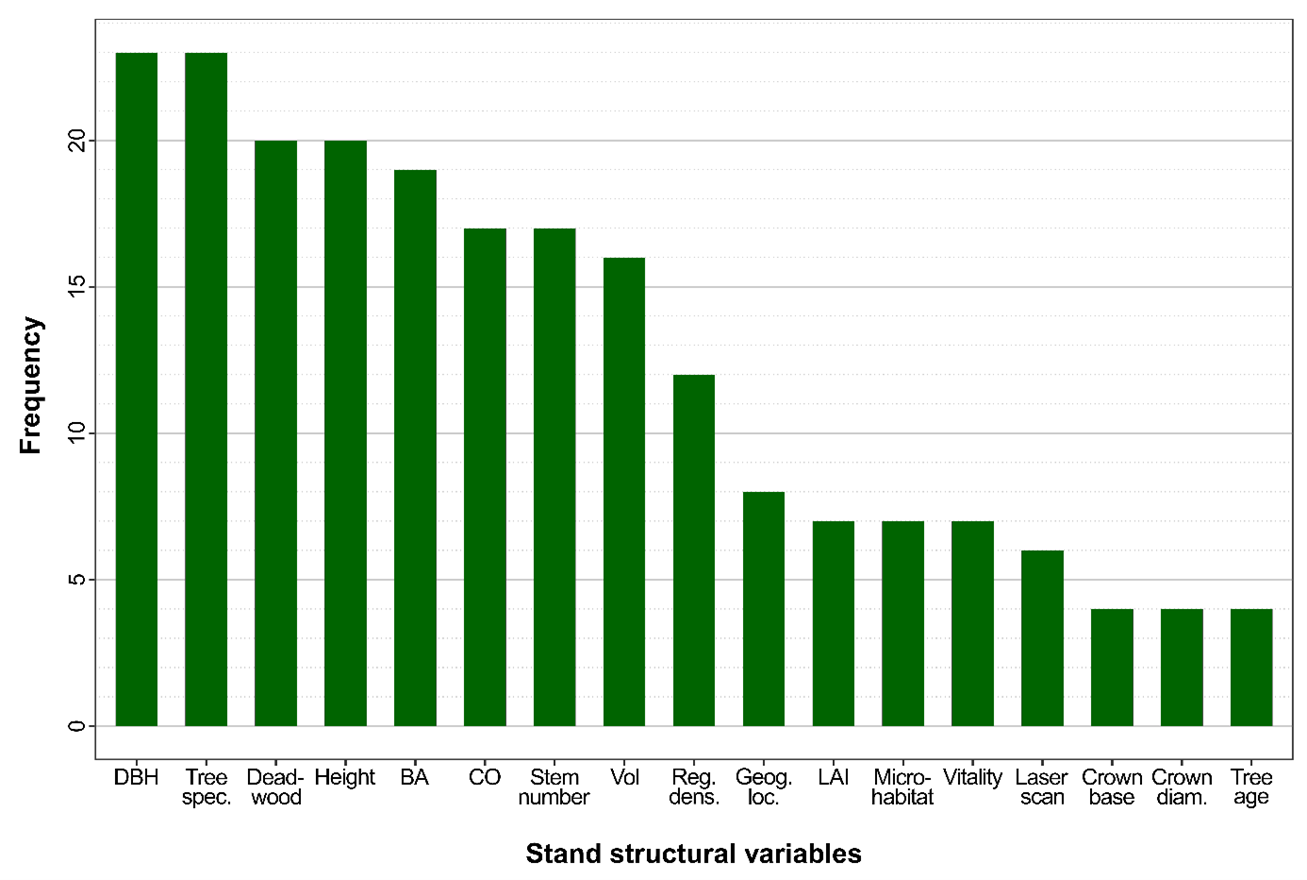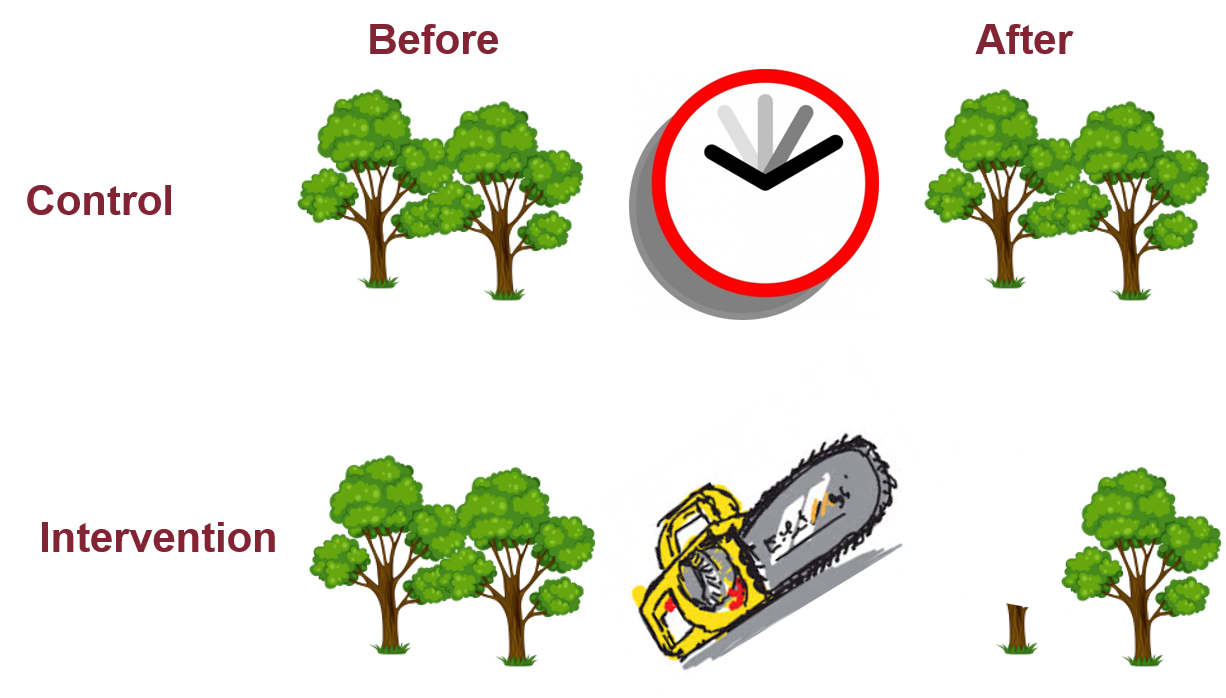The Experiment Working Group of the Action brought its first deliverable to the table. We set up a network of European forestry experiments that investigate the effects of various forestry treatments on multi-taxon biodiversity.
Experiments – Opportunity to gain fine-scale information
Experiments are very diverse. They investigate various treatments, are carried out in various ways, at various spatial scale and with various design. It is hard to merge them into a uniform database. Why do we still try to combine them? What additional value can they add to the observational studies included in the Bottoms-Up platform? The answer can be found in the fine spatial scale at which they provide direct information on the effects of a given forestry intervention. Moreover, they often focus on innovative management strategies that are underrepresented across the network of observational studies.
What was our aim?
We collected data from experiments based on forest stand manipulation (different types of cutting, microhabitat creation, etc.) in which the response variable was multi-taxon biodiversity, i.e., the diversity of at least three organism groups. Because of the above-mentioned heterogeneity, our first goal was to give an overview about the existing (and planned) experiments, and to define overlapping topics based on this information. These topics can be then subjected to joint analyses. Additional measurements can be also planned across different experiments to enhance the degree of overlap between them.
Representativeness of the network
We collected 26 experiments across 14 European countries. The experiments comprise 284 sites from Spain to Finland, from sea level to high mountains. The spatial scale of the experiments shows a broad variation: some of them are carried out only at one site, while others encompass up to 89 sites. The site extent varies between 0.16 and 30 000 ha. It will be a great challenge to plan common analyses!
All the collected experiments contain control plots, and most of them also before-treatment data. This is called BACI (Before-After-Control-Impact) design that enables to evaluate the results compared to both temporal and spatial references.
Sites of the experiments represent 27 forest types from 11 forest categories (see EEA, 2006). Three forest types – mesophytic deciduous forest, beech forest, and mountainous beech forest – are overrepresented; while boreal forests, broadleaved evergreen forests, mire and swamp forests, and plantations are underrepresented, and some rarer forest types are missing.
The investigated treatments vary broadly: most of them are cuttings, which is not very surprising, since these are the main intervention types of forest management. However, within cutting experiments, the proportion of gap-cutting is much higher than the ratio of forests managed by such innovative silvicultural system. Besides cutting, microhabitat enriching treatments (primarily deadwood creation) are also quite frequent. These treatments are usually applied within conservation-oriented management actions whose aim is not timber production, but “only” the enhancement of forest biodiversity. An important issue of forest management is the browsing by wild ungulates, thus the effect of game-exclosure is also in the focus of forestry experiments. We have some additional treatment types as well, as prescribed burning, litter raking, ditch filling, and so on.

Frequency of the different treatment categories and subcategories in the experiment network. Abbreviations: Cutting: CLE=clear-cutting, CLO=close-to-nature forestry, CON=conservation-oriented management, CAT=Catalan reference model, FOR=forest–open field mosaic creation, GAP=gap-cutting, GRE=green tree retention, THI=thinning, UND=undergrowth removal. Microhabitat: DEA=deadwood creation, HAB=habitat trees. GAM=game exclosure. Floor manipulation: LIT=litter raking, FER=fertilization, MEC=mechanical damage of ground layer. BUR=prescribed burning. Tree composition: ADM= admixing species, PUR=pure and mixture of two tree species. Water manipulation: DIT=ditch filling.
Emphasis on multi-taxon biodiversity
On average, 7 taxa are sampled in each experiment, with the most comprehensive experiment including information on 11 taxa! Altogether 24 organism groups are present in the network. Plants are involved into almost all experiments, but fungi, beetles and birds are also very frequent. Among arthropods, various groups are investigated in the different experiments, from spiders, through butterflies to bugs. However, most of the arthropod sampling methods, i.e. several types of traps, are collecting individuals of highly numerous taxonomic groups. This opens opportunities for collaborations, since usually specimens of numerous taxa are collected but only few groups are subjected to identification. The Bottoms-Up platform may provide the means to share competencies and perform additional identification work, increasing the number of taxa that could be analysed for each experiment.

Frequency of studied taxa in the experiment network.
Additional data
Although our main aim is to explore the treatment–biodiversity relationships, measurement of some environmental variables can help us to understand the mechanisms behind these effects. Light for instance is the main driver of understory plants, and it was measured in 18 projects. Soil components, air temperature, soil pH and air humidity data are available also for more than 10 projects. Litter data are collected only in few experiments. Basic stand structural data (species identity and diameter of trees) are measured in most of the experiments, and in many cases, also deadwood, height of the trees, openness of the canopy, and tree density were sampled. Eighteen experiments also studied different kinds of additional processes, among which game browsing and decomposition were the most frequent.

Frequency of measured environmental variables in the experiment network

Frequency of measured stand structural variables in the experiment network
What is all of this good for?
The present synthesis about forest manipulation experiments provides an interesting state-of-the-art, thus also the potential ways forward. We identified two main approaches for joint analyses:
1) Connecting similar treatments: We should explore what is the effect of a given treatment type on the forest biodiversity through many experiments carried out in various forest types?
2) Connecting similar taxa: If we are focusing on one or several taxa, we could unfold how do they respond to various treatments in various forest types?
The most important commonalities among studies based on forest manipulation experiments are gap-cutting, thinning, deadwood manipulation and game exclosure among the treatments, and vascular understory, regeneration, beetles, fungi, birds and lichens among the taxa. These commonalities allow for broad generalisations. Up-scaling lessons learnt from individual experiments will provide evidences for conservation strategies at European level.
Our report is freely available, and the network is open to other researchers. If they own data based on forest manipulation experiments that fit our criteria, they are welcome to join our network. New experiments that are similar to the most frequent ones in the network could strengthen the common analyses, while projects about underrepresented topics could help to fill our knowledge gaps.
Acknowledgements
I thank for the contribution all experiment custodians, who filled our description form about their own experiments. I am grateful to Péter Ódor and Bence Kovács for their help to assemble the report and to Sabina Burrascano for her inspiration, instructions, suggestions and corrections.
Post by Flóra Tinya



